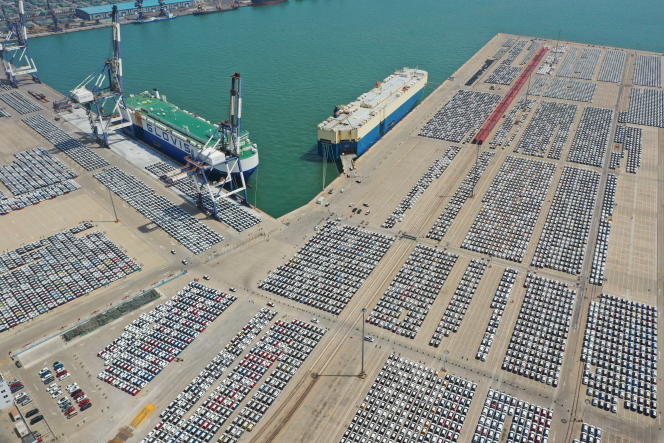Beijing’s response was not long in coming. The day after the announcement of an investigation into Chinese public subsidies for electric vehicles, “wattures”, by the President of the European Commission, Ursula von der Leyen, China rebelled.
“This is a blatant protectionist act that will seriously disrupt and distort the automotive industry and supply chain globally, including in the European Union [UE], and which will have a negative impact on economic and trade relations between China and the EU”declared the Chinese Ministry of Commerce on September 14.
The investigation announced by Brussels responds to the extraordinary rise of China in the automobile industry. A few figures are enough to demonstrate this. In 2021, the country imported twice as many vehicles as it exported, in value. In the first half of 2023, Chinese industry overtook Japan to take first place in the world, exporting $35 billion (€32.76 billion) worth of vehicles, compared to $21 billion worth of imports. . As for subsidies for electric cars, the AlixPartners firm estimates them at $57 billion in the form of tax reductions or assistance with vehicle purchases.
Local champions
Alternately wielding the carrot and the stick, China has, since 2009, pushed investment in the sector. At a time when technology is not ready to conquer the general public, local authorities have been encouraged to equip their taxi and bus fleets with electric vehicles, thanks to central government subsidies of up to 60,000 yuan (7,700 euros) per car and 100,000 yuan per bus. BYD, now the Chinese number one in the sector, will be the big winner from this strategy.
Later, China will support the battery sector by requiring manufacturers in 2015 to equip themselves with Chinese batteries to benefit from purchasing aid. Enough to promote local champions, like BYD and especially CATL, which dethroned the Korean Panasonic in 2020 to become world number one in the sector. Still to encourage people to choose an electric car rather than a thermal vehicle, certain cities have put in place another very incentive system.
In 2016, Shanghai offered a privilege to electric vehicles by implementing green license plates, which escape the auction system in force for thermal vehicle plates. The following year, other metropolises followed this example. “According to our research in cities that have taken these measures, sales of electric vehicles have increased three to five times compared to the rest of China”says Stephen Dyer, automotive specialist and director of the consulting firm AlixPartners.
You have 54.5% of this article left to read. The rest is reserved for subscribers.
